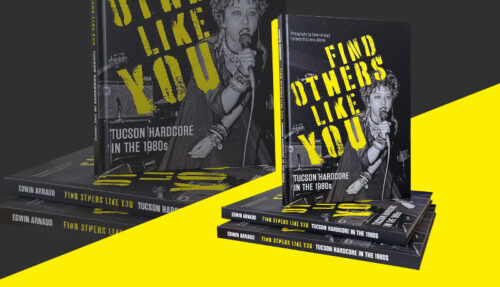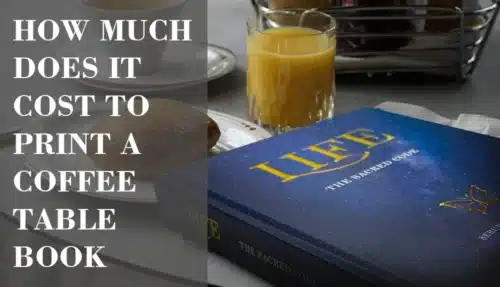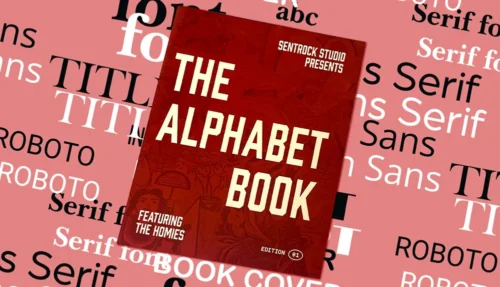If you've written a children's book, or you're planning to do so, you'll need to think about the best print format for your project and your budget. This guide tells you everything you need to know to make that decision.
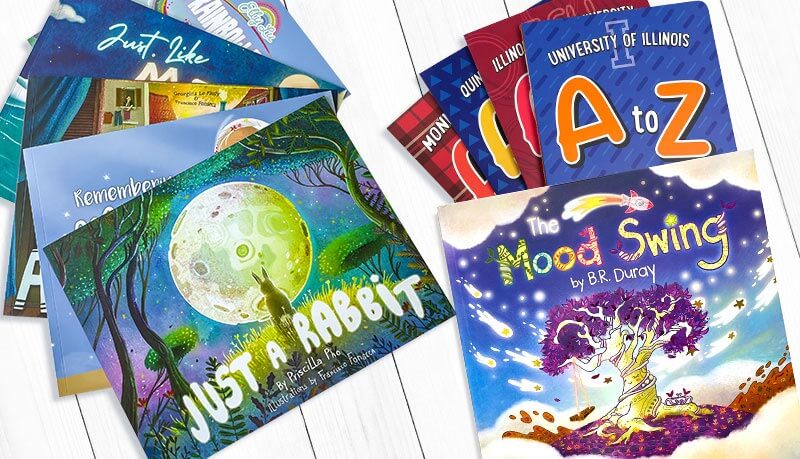
The range of children's book formats
Children’s books come in a myriad of formats, each designed to cater to different developmental stages and reading preferences. The aim of this blog post is to unravel the intricacies of various types of children’s book formats, focusing on their structural characteristics and the printing processes involved. Whether you’re envisioning a sturdy board book for toddlers, an engaging pop-up book for early readers, or a Middle Grade chapter book, understanding these details is essential. We’ll look at the practical aspects of producing different kinds of children’s books, providing you with the knowledge to make informed decisions about which format best suits your content and target audience, not to mention your budget.
The structural and printing aspects of children’s books are often overlooked, but they play a significant role in the book’s appeal and durability, as well as the cost of production. A well-constructed book not only enhances the reading experience but also makes sure that the book can withstand the enthusiastic handling of young readers!
We’ll also address the practical considerations that come with book production, such as cost, material selection, and printing techniques. By providing a comprehensive overview, we aim to demystify the production process, making it accessible and understandable. Whether you’re a seasoned publisher or a first-time self-publisher, we hope this guide will serve as a valuable resource in your journey to create captivating and durable children’s books.
Who is this guide to children's book formats for?
This guide is tailored for a diverse audience, including potential publishers, self-publishers, authors, and anyone with an interest in children’s book production. If you’re a publisher looking to expand your catalog with high-quality children’s books, you’ll find this offers detailed insights into the various formats available and their respective production processes. Understanding these elements will enable you to choose the right format that aligns with your brand’s vision and market needs.
For self-publishers, this guide should prove an invaluable resource that breaks down the complexities of children’s book production into manageable steps. Self-publishing can be a daunting endeavor, especially when it comes to selecting the right book format and navigating the printing process. So, drawing on our almost 30 years of experience in the industry, we give you practical advice and clear information to help you make informed decisions, guaranteeing that your self-published children’s book is both professional and appealing; indistinguishable, in fact, from a mainstream published book.
Authors and enthusiasts of children’s literature will also find this guide beneficial. Knowing the different types of children’s books and their structural characteristics can enhance your storytelling approach and help you collaborate effectively with illustrators and publishers. We also hope that educators and parents interested in the book creation process will gain a deeper appreciation for the craftsmanship involved in producing children’s books, enriching their understanding of the books they share with young readers.
By catering to this diverse audience united by a common interest in high-quality children’s literature, we aim to foster a deeper understanding and appreciation of the art and science behind children’s book production, ultimately doing our bit to contribute to the creation of engaging and enduring literature for young readers.
Board books
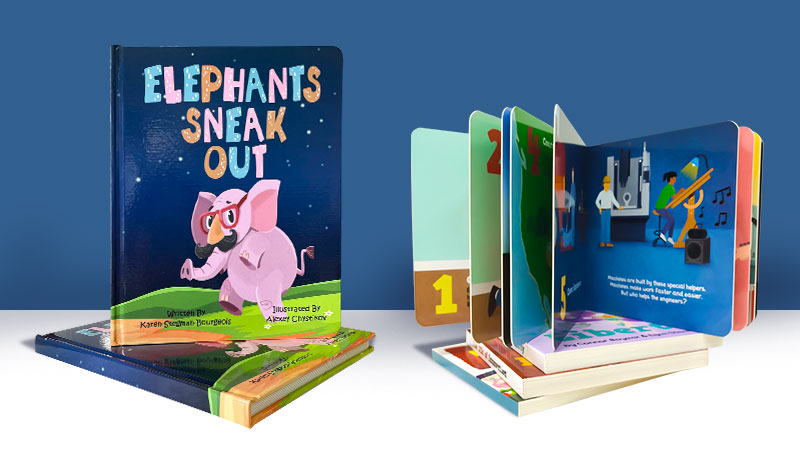
Description
Board books are a staple in early childhood literature, characterized by their durability and thick pages. Designed specifically for toddlers and pre-schoolers, these books are built to withstand rough handling, chewing, and other common toddler behaviors. The sturdiness of board books makes them ideal for little hands that are still developing fine motor skills. Their simplicity in design often includes bright colors and straightforward content, catering to the cognitive and sensory development of young children.
Target age group
Board books are primarily aimed at children aged 0–3 years. This age group benefits from the robust construction of board books, as they can handle them independently without the risk of tearing pages. The content is generally tailored to early developmental stages, featuring simple words, repetitive phrases, and familiar objects. These books play an important role in introducing babies and toddlers to the world of reading, often serving as a child’s first encounter with books.
Structural details
Board books are made from heavy cardboard, providing a solid and durable construction. Each page is thick and often laminated, which helps in resisting moisture and damage from frequent handling. The pages are typically bound together with a sturdy non-toxic glue, making sure that the book remains intact despite rough use. Rounded corners are a common feature, enhancing safety by preventing sharp edges that could potentially harm young children. The size of board books is usually small and manageable, no more than 6″ x 6″, perfect for tiny hands to hold and explore.
Printing process
The printing process for board books involves printing each two-page spread—usually on 350 gsm C1S paper. Then, it is laminated for added durability and resistance to wear and tear. This lamination also makes the pages easier to clean, an essential feature for books handled by toddlers. Then cut each spread and fold it in the middle and glue the spreads together. The assembly process often includes die-cutting to create the rounded corners and any interactive elements such as flaps. Given the young target audience, safety is paramount, so we always use non-toxic inks and materials in the printing process to make sure the books are safe if chewed or sucked on by infants.
Pros and cons
The primary advantage of board books is their durability, making them ideal for young children who are still developing their motor skills and tend to be less gentle with their possessions. They are also designed to be safe, with features, as we’ve noted, like rounded corners and non-toxic materials. However, the production of board books can be more costly than, say, a thin paperback due to the materials, die-cutting, and lamination involved. This higher production cost can translate to a higher retail price, however, and board books consistently sell very well. Obviously, the thick pages limit the amount of content that can be included, which can be a drawback for more complex stories.
Best use cases
Board books are best suited for presenting simple stories, basic concepts such as colors, shapes, and numbers, and familiar objects or animals. They are also excellent for incorporating interactive elements like flaps, which can engage toddlers and promote fine motor skills development. Due to their durability and safety features, board books are ideal for use in settings where books may be handled by many children, such as daycares and early childhood education centers. They are also perfect as a first introduction to books for infants and toddlers, laying the foundation for a lifelong love of reading. Find out more about children’s board book printing services.
Pop-up books
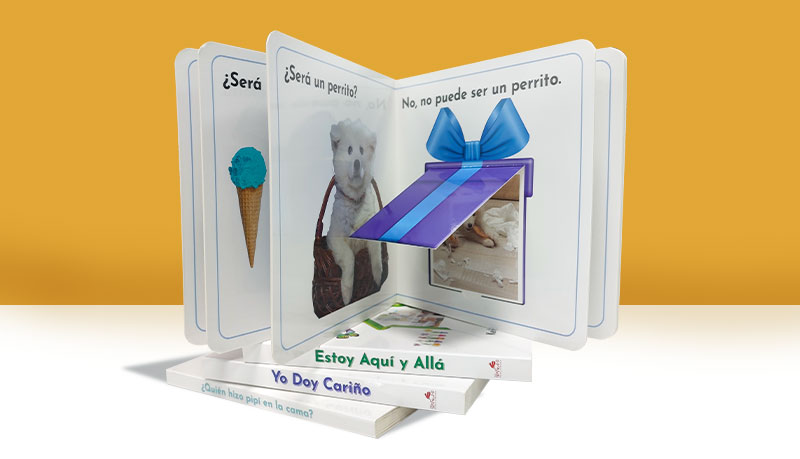
Description
Pop-up books are a captivating genre of children’s literature that features three-dimensional paper mechanisms designed and engineered to surprise and delight readers. These books bring stories to life by incorporating intricate paper engineering, where elements “pop up” from the pages when opened. The interactive nature of pop-up books engages children in a unique way, enhancing their reading experience through visual and tactile stimulation. These books often depict scenes from fairy tales, adventures, or educational topics, making them a popular choice for both entertainment and learning.
Target age group
Pop-up books are typically aimed at children aged 3–8 years. This age range is ideal because children in this group have developed enough fine motor skills to handle the delicate paper mechanisms with care. Younger children in this range are mesmerized by the interactive elements, while older children can appreciate the complexity and creativity involved in the designs. Pop-up books can also serve as excellent tools for encouraging reluctant readers to engage with books due to their entertaining and dynamic nature.
Structural details
The structural design of pop-up books involves our team of expert paper engineers as various parts of the page are cut, folded, and glued to create three-dimensional scenes. When a page is opened, these elements unfold or rise up, creating a dynamic and engaging experience. The mechanisms can vary from simple folds to complex constructions involving multiple layers and moving parts. Because of their complexity, the pages are usually made of sturdy paper to support the pop-up elements, and the books themselves are often hardcover to provide additional durability and protection.
Printing process
The printing and assembly process for pop-up books is significantly more complex than for standard board books. It begins with the printing of high-quality illustrations on sturdy paper. The paper is then die-cut to create the various components of the pop-up mechanisms. These components are often hand-assembled due to the precision required in folding and gluing the parts to ensure they function correctly. The complex nature of the assembly process makes production time-consuming and labor-intensive, often resulting in higher production costs but also resulting in a truly beautiful and unique product. Quality control is critical to guarantee that each pop-up element works smoothly and withstands repeated use.
Pros and cons
Pop-up books offer numerous advantages, including their ability to captivate and engage children through interactive and visually stunning elements. They can make stories and educational content more memorable and enjoyable. However, the primary drawbacks include their fragility and higher production costs. The complex paper mechanisms can be easily damaged by rough handling, making them less durable than other book types. Additionally, the labor-intensive production process makes these books more expensive to produce and purchase. This fragility and cost can limit their practicality for very young children or environments where they might be handled roughly.
Best use cases
Pop-up books are best used for visually engaging stories and educational content that benefit from a three-dimensional presentation. They are particularly effective for illustrating complex scenes, fantastical worlds, and interactive storytelling. Pop-up books can also be powerful educational tools, making abstract concepts more concrete and easier to understand through visual aids. They are ideal for special occasions, gifts, and collector items due to their unique and artistic nature. In educational settings, pop-up books can be used to teach topics like anatomy, geography, and science in a more interactive and engaging way, fostering a deeper interest and understanding in young learners. Get more information about children’s pop-up book printing.
Illustrated story books
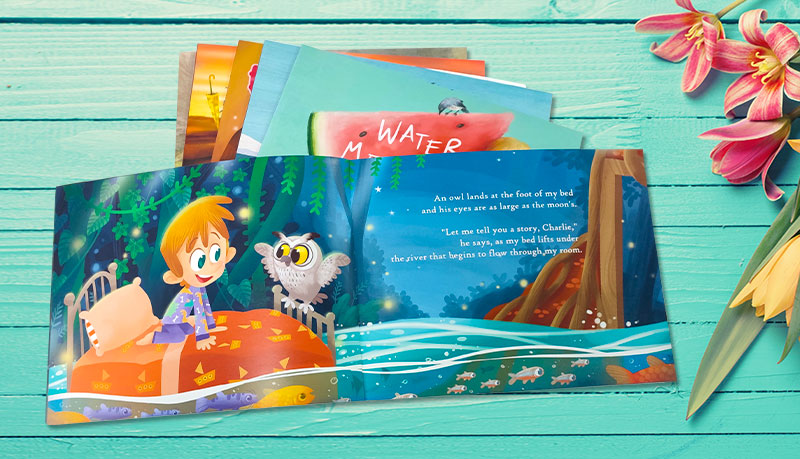
Description
Illustrated story books are a beloved category of children’s literature that combines narrative text with rich, engaging illustrations. These books are designed to captivate young readers by pairing compelling stories with vibrant artwork. The illustrations not only complement the text but also enhance the storytelling by providing visual context and aiding in the reader’s comprehension. Illustrated story books are versatile and can cover a wide range of themes and genres, from classic fairy tales to contemporary stories.
Target age group
Illustrated story books are primarily aimed at children aged 4–7 years. This age group benefits significantly from the combination of text and images, which helps to develop their reading skills and imagination. For younger children in this range, the illustrations can help them understand the story even if they cannot yet read all the words. As children grow older and their reading abilities improve, the stories in these books often become more complex, encouraging them to read more independently while still enjoying the visual elements.
Structural details
The structural design of illustrated story books typically includes a mix of text and illustrations spread throughout the pages. These books are often produced as hardcover or paperback, with high-quality gloss finished paper to make sure the illustrations are vibrant and durable. The illustrations can be full pages, integrated with the text, or presented as vignettes alongside the text. The binding style is important to guarantee that the book can withstand frequent handling by young readers. The size and format of the book are also important considerations, with larger formats often preferred to showcase the artwork more effectively.
Printing process
The printing process for illustrated story books involves accurate reproduction of the artists’ work through high-quality color printing. Offset printing is the best option here for its precision and ability to handle vibrant colors and detailed illustrations with faithful reproduction and subtler variations. The paper selected for these books is typically glossy or semi-glossy to enhance the colors and make the images pop. The pages are printed in full color and often require careful calibration to ensure consistency across all copies. Binding can be either perfect bound, glued or sewn, with hardcover editions offering additional durability and a premium feel.
Pros and cons
Illustrated story books offer the significant advantage of combining visual and textual storytelling, which can engage children more deeply and cater to different learning styles. The illustrations can help children understand and remember the story better, making reading a more enjoyable experience. However, very careful material choices are required due to the need for high-quality color printing and better paper stock. While the illustrations are a major draw, they can sometimes overshadow the text, potentially limiting the book’s appeal to older children who may prefer more text-heavy content.
Best use cases
Illustrated story books are ideal for a variety of settings and purposes. They are perfect for bedtime stories, classroom read-aloud sessions, and personal reading time. These books are particularly effective for storytelling that relies on visual elements, such as fairy tales, adventures, and stories about animals. They are also excellent tools for teaching early literacy skills, as the combination of text and illustrations can help young readers make connections between words and images. Illustrated story books are also a great choice for introducing children to more complex narratives and diverse themes, fostering a love of reading and an appreciation for art from an early age. Learn more about printing illustrated children’s books
Chapter books
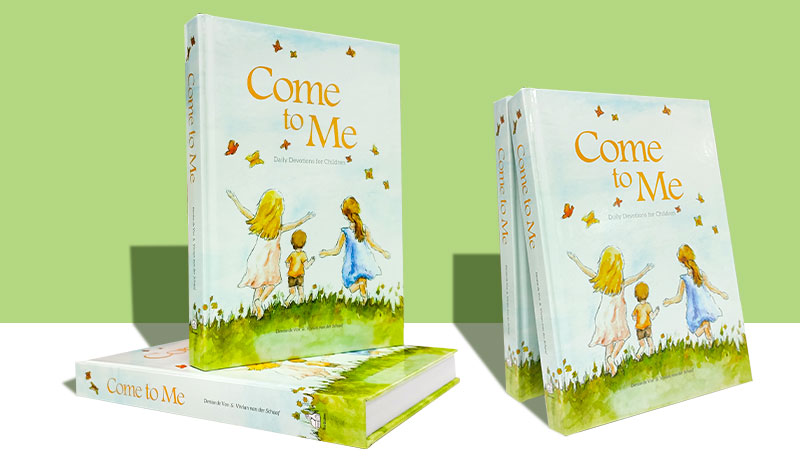
Description
Chapter books are a type of children’s literature designed for early readers who are transitioning from picture books to more text-heavy books. These books are characterized by longer narratives divided into chapters, making them more suitable for children who are ready for more advanced reading. Chapter books typically contain minimal illustrations, focusing more on text to develop reading fluency and comprehension skills. The stories are often more complex and can cover a wide range of genres, including adventure, fantasy, and realistic fiction.
Target age group
Chapter books are primarily aimed at children aged 7–10 years. This age group is developing greater reading skills and is ready for more challenging content. Chapter books cater to this developmental stage by providing stories that are longer and more intricate than those found in picture books, yet still accessible to young readers. These books help bridge the gap between early readers and more advanced novels, fostering a sense of accomplishment and encouraging a lifelong love of reading.
Structural details
The structural design of chapter books usually includes a perfect bound format, where the pages are glued to the spine, although some higher-end editions may feature sewn bindings for added durability. These books can be either paperback or hardcover, depending on the target market and price point. The pages are typically made from standard uncoated paper, and the text is set in a readable font size with appropriate line spacing for young readers. Illustrations, if included, are usually sparse, often rendered in black-and-white, and placed strategically to complement the text without overwhelming it. Chapter books often feature around 100–150 pages, divided into manageable chapters to facilitate reading.
Printing process
The printing process for chapter books involves standard text printing techniques, often using offset printing for large print runs to guarantee consistency and cost-effectiveness. The paper used is usually of moderate weight, providing a balance between durability and cost. While the majority of the book consists of black-and-white text, occasional illustrations may be included, requiring careful placement during the layout process. The cover is typically printed in full color and laminated for durability, especially in paperback editions.
Pros and cons
Chapter books offer several advantages, including their ability to engage young readers with more complex stories and character development. They help improve reading skills and build reading stamina, encouraging children to read independently. The relatively low cost of production compared to heavily illustrated books makes them more affordable for families and schools. However, the lack of extensive illustrations might make them less appealing to children who are still visually oriented in their reading preferences. Additionally, the higher word count and longer narratives may be challenging for reluctant readers or those with reading difficulties.
Best use cases
Chapter books are best suited for children who are ready to progress beyond picture books and develop more advanced reading skills. They are ideal for independent reading, providing a sense of achievement as children complete each chapter and ultimately the entire book. These books are also excellent for read-aloud sessions, where a chapter can be read each night, fostering a routine of regular reading. Chapter books can cover a wide range of genres and themes, making them versatile for both entertainment and educational purposes. They are particularly useful in classroom settings for group reading activities and discussions, helping to develop critical thinking and comprehension skills among young readers. Build your knowledge of children’s paperback book printing.
Activity and coloring books
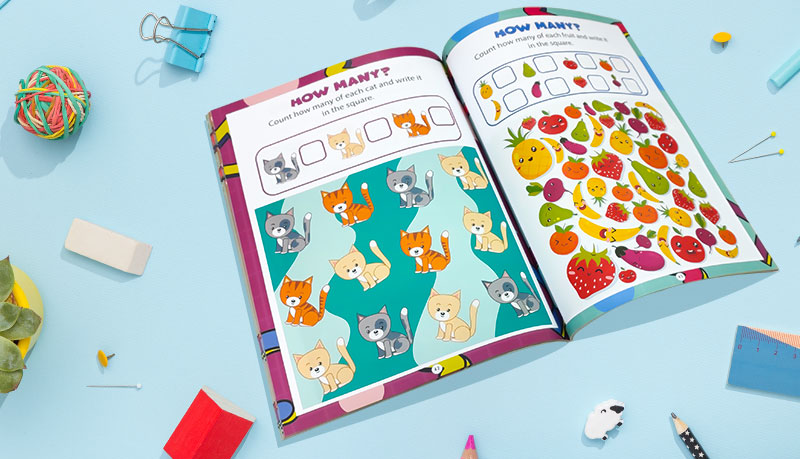
Description
Activity and coloring books are interactive books designed to engage children through hands-on activities and creative tasks. These books often include a variety of activities, such as puzzles, mazes, connect-the-dots, and coloring pages, which provide both entertainment and educational value. Activity and coloring books encourage creativity, problem-solving skills, and fine motor development, making them a popular choice for both recreational and educational use. The content can range from simple coloring pages for younger children to more complex puzzles and activities for older kids.
Target age group
Activity and coloring books are suitable for a wide age range, typically from 3 to 10 years old. Younger children (ages 3–5) benefit from simple coloring pages and basic puzzles that help develop their fine motor skills and hand-eye coordination. For children aged 6–10, more complex activities such as detailed coloring pages, word searches, and brainteasers are appropriate, providing both a challenge and a source of entertainment. These books are often tailored to different age groups, guaranteeing that the activities are developmentally appropriate and engaging.
Structural details
Activity and coloring books are usually paperback or saddle stitched and consist of pages that are easy to handle and manipulate. The pages are often perforated, allowing children to tear them out easily for display or sharing. The paper used is typically thicker and more absorbent than standard book paper to accommodate various drawing and coloring materials, such as crayons, markers, and colored pencils. The size of these books can vary, but they are generally large enough to provide ample space for activities while still being portable. Covers are usually designed to be visually appealing and durable, often with bright colors and engaging designs.
Printing process
The printing process for activity and coloring books involves high-quality black-and-white printing, as most of the content is intended to be colored or written on by the child. Offset printing is commonly used for large print runs to ensure cost-effectiveness and consistency. The paper is chosen for its ability to handle different types of coloring and writing tools without bleeding through. Some activity books may also include sections with color printing, especially if they provide instructions or examples. Perforation of tear-out pages is an additional step in the production process, requiring precise cutting to ensure easy removal without damaging the content.
Pros and cons
The primary advantage of activity and coloring books is their ability to engage children in creative and educational activities. They are excellent tools for developing fine motor skills, problem-solving abilities, and creativity. These books are also relatively inexpensive to produce and purchase, making them accessible to a wide audience. However, the consumable nature of these books means they have a shorter lifespan compared to traditional storybooks, as pages are often torn out and used up. Although, that can be an advantage for the savvy publisher as it can lead to repeat sales if a series or range of books is developed.
Best use cases
Activity and coloring books are ideal for a variety of settings and purposes. They are perfect for keeping children entertained during travel, waiting periods, or quiet time at home. These books are also excellent for use in educational settings, such as classrooms and daycare centers, where they can supplement learning with fun and engaging activities. Activity and coloring books make great gifts and party favors, providing hours of entertainment. They are also beneficial for therapeutic purposes, helping children to relax and express themselves creatively. Whether for individual use or group activities, these books offer a versatile and engaging way to support children’s development and creativity. Learn more about printing activity books and coloring books for kids.
Educational books
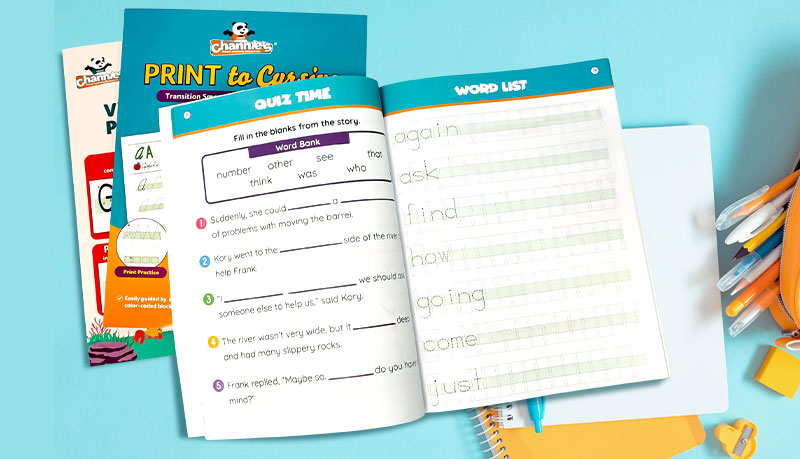
Description
Educational books for children are designed with the primary goal of teaching specific concepts, skills, or knowledge in an engaging and accessible manner. These books cover a wide range of topics, including mathematics, science, history, language arts, and more. They often incorporate interactive elements, such as questions, activities, and experiments, to reinforce learning and make the content more engaging. Educational books aim to complement school curricula and provide additional resources for learning at home.
Target age group
Educational books cater to a broad age range, typically from 3 to 18 years old, with content and complexity adjusted to match the developmental stages and learning abilities of different age groups. For younger children (ages 3–6), these books often focus on foundational skills, such as basic counting, letter recognition, and simple scientific concepts. For older children (ages 7–12), educational books delve into more advanced topics, offering in-depth explanations, detailed illustrations, and challenging exercises to enhance their understanding and knowledge. High school and college level books may be indistinguishable from academic books intended for an adult readership.
Structural details
The structural design of educational books varies depending on the target age group and subject matter. These books are often printed in a larger format to provide ample space for illustrations, diagrams, and interactive elements. Hardcover and paperback options are common, with durable bindings to withstand frequent use. Pages are typically made from high-quality paper that can handle repeated handling and, in some cases, writing or drawing if the book includes exercises or activities. Many educational books also feature full-color printing to make the content more visually appealing and easier to understand.
Printing process
The printing process for educational books involves high-quality color printing to ensure that illustrations, diagrams, and other visual elements are clear and engaging. Offset printing is the ideal technique. The design and layout process is essential, as it needs to balance text, images, and interactive elements in a way that enhances learning. High-quality paper is chosen for its durability and ability to support various types of media, from text and illustrations to interactive activities. Some educational books may also include digital components, such as QR codes or links to online resources, which require additional design and integration during the printing process.
Pros and cons
Educational books provide significant benefits, including the ability to reinforce and supplement school learning, make complex subjects accessible, and engage children through interactive and visually appealing content. They can be valuable resources for parents and teachers looking to enhance a child’s education. However, the production costs can be higher due to the need for quality materials and full-color printing. Additionally, the effectiveness of educational books depends on the quality of the content and its alignment with educational standards and curricula. Poorly designed books can fail to engage children or provide the intended educational value. For this reason, they are usually developed in consultation with educational professionals.
Best use cases
Educational books are best used as supplemental learning tools in both home and school environments. They are ideal for reinforcing concepts taught in the classroom, providing additional practice, and introducing new topics in a fun and engaging way. These books can be used for independent learning, guided study sessions, or group activities. They are particularly useful for subjects that benefit from visual aids and interactive learning, such as science experiments, math puzzles, and historical timelines. Educational books are also great for homeschooling, offering structured content and activities that align with educational standards. Whether for homework support, enrichment, or exploration of new interests, educational books play a vital role in children’s learning and development. Learn more about a range of printing options for educational books.
What to consider when choosing children's book formats
Content type
When selecting a book format, it’s essential to match the complexity and nature of the content with the appropriate format. For example, simple board books with thick pages and minimal text are ideal for toddlers who are just beginning to explore books. On the other hand, chapter books with longer narratives and minimal illustrations are better suited for older children who are ready for more advanced reading. Consider the thematic elements of the content as well; for visually rich stories, such as fairy tales or science fiction adventures, formats like illustrated story books or pop-up books may be more appropriate to enhance the storytelling experience.
Target age group
Durability and safety are both vital considerations when choosing a book format, especially for younger readers. Board books, with their sturdy construction and rounded corners, are designed to withstand rough handling by toddlers and are less likely to be damaged by chewing or bending. For older children, consider factors such as font size, paper quality, and binding strength to ensure that the book can withstand repeated use without falling apart. Additionally, be mindful of any small or detachable parts in interactive books that could pose a choking hazard for younger readers.
Budget
Balancing quality and cost-efficiency is essential when selecting a book format, especially for publishers and self-publishers working within a limited budget. Board books and pop-up books, with their specialized construction and materials, tend to be more expensive to produce than paperback chapter books or activity books. Consider factors such as printing costs, material expenses, and distribution fees when determining the feasibility of different formats. Keep in mind that while higher-quality materials and production methods may result in a higher upfront cost, they can also lead to a more durable and marketable product in the long run.
Talk to us — we're here to help you!
The process of choosing the right book format for children’s literature involves careful consideration of several factors to make sure the final product meets the needs of young readers and aligns with the goals of publishers and self-publishers. By matching the complexity and nature of the content with the appropriate format, you can create books that are engaging, educational, and age-appropriate.
If you’re a self-publishing children’s author or illustrator, or a small press or larger publishing house wanting to print children’s books — and only the finest product and unbeatable customer service will do — we should talk. Get in touch today to chat through your needs or to ask for a no-obligation quote. We can’t wait to help you make your next children’s book the best ever!







